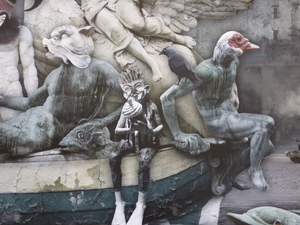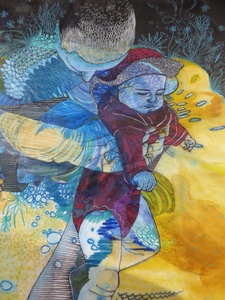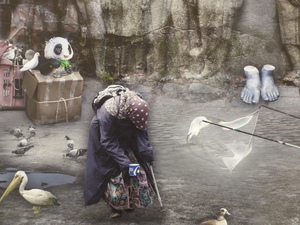Pablo Picasso’s Guernica is often described as an anti-war symbol due to its vivid depiction of the pain and destruction caused by war. Currently on show in an exhibition entitled “Pity and Terror: Picasso’s Path to Guernica”, this painting encapsulates the two strong emotions of pity and terror; not only scaring the viewer through the realisation of the brutality of war but also motivating them to express some form of commiseration. It is this same spirit that is present in the Found ă mentalism II exhibition.

Artist: Marcin Owczarek – Photo: Denise Perini
Found ă mentalism II is inspired by Picasso’s words on Guernica: “[…] an artist who lives and works with spiritual values cannot behave indifferently when faced with a conflict in which the highest values of humanity and civilization are at risk”. In portraying war, Guernica provides us with the problem (war) while prompting us towards a solution. Found ă mentalism II does this through transmedia exhibits presenting the global issue of war and displacement.

Artist: Dani Nordt – Photo: Denise Perini
On receiving the problem, the viewer now expects a solution. This exhibition poses a question on the status of art within society; is art the solution, or will it at least ease the process of discovering the solution? Picasso stated that “Art is a lie that makes us realize truth”, and so we come to understand that art is, in fact an intermediary between question and answer, between problem and solution, between apathy and action. Found ă mentalism II invites us to redefine our perspectives and connect with a social conscience which will allow us to build a culturally diverse and compassionate society, with a strong cultural space at its core.

Artist: Marcin Owczarek – Photo: Denise Perini
